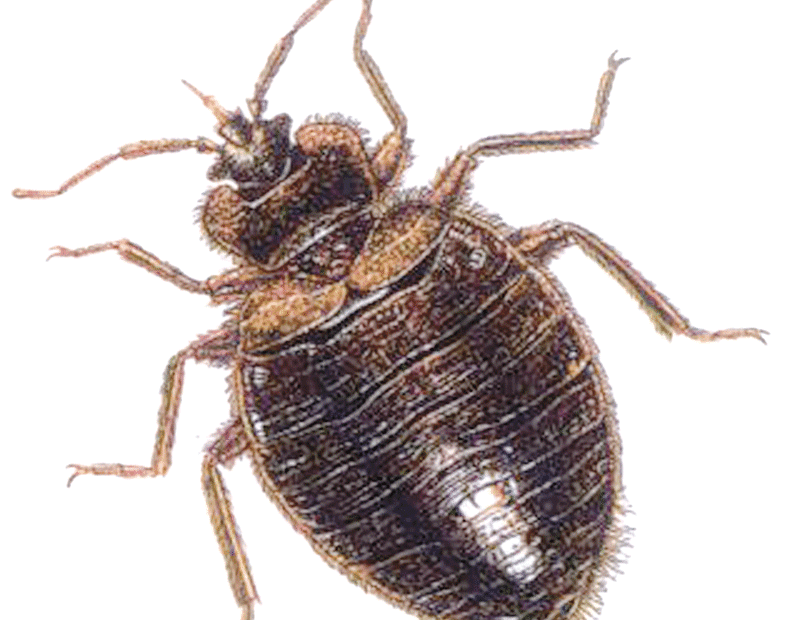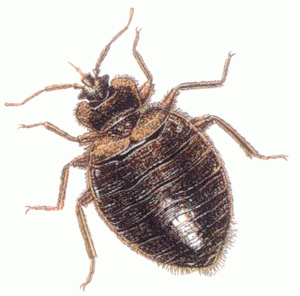
Bedbugs and the Traveler
Take Some Precautions So These Pests Don’t Get Under Your Skin
You arrive at your hotel room after a long day of business travel. You enjoy a nice dinner with clients and wearily slip between the sheets. You wake refreshed and ready for another profitable day.While performing your morning ritual, you look in the mirror and notice a line of red spots along your waist. They begin to itch, so you scratch. They get redder as you scratch and itch, and you begin to wonder … what could this be?
This scenario is becoming more and more prevalent for business and family travelers. Also, don’t rule it out after a visit from family or friends.
We’re talking about the unwanted, mysterious, hitchhiking, blood-sucking parasite called the bedbug. These are flat, reddish-brown, oval insects about the size of an apple seed, and they thrive on human blood.
The reason they are called bedbugs is because, like people, they do not want to work any harder than necessary to survive and thrive. They camp out as close as possible to their blood meal (you) and feed when they are least likely to be swatted or crushed (while you are in bed, asleep).
Bedbugs acquired a taste for people way back when man first sought shelter in caves. Scientists believe that they were already present surviving and thriving on bats and other mammals living there. Today they are comfortable resting and feeding on us in our homes. As stated, they prefer to be close, so … our bed frames, headboards, adjoining furniture, couches, and, yes, our beloved recliners are all fair game.
The good news is that, even though they are piercing our skin and violating our blood vessels, they do not transmit diseases. Some people can have a severe reaction to the bites but no disease transmission.
The bad news is that they are extremely difficult to eradicate, so travelers beware. The cost can run into the thousands of dollars. The reason for this is that an effective treatment requires a minimum of two people to disassemble bed frames, move and flip mattresses, box springs, dressers, couches, etc. Additionally, it usually takes a minimum of three treatments over three months. Extreme cases require even more.
So, what can we do as world travelers do to prevent the possibility of bringing bedbugs home with us? The extermination industry offers the following travel tips:
• When you first arrive at your hotel, pull back the sheets and check the mattress seams, particularly at the top corners. If you see insects, small dark spots (digested, dried blood), or anything suspect, change rooms and/or hotels.
• Check around the room before unpacking. Inspect the headboard, couches, chairs, etc. for the telltale signs.
• Upon returning home, check your suitcases before bringing them into the house. Vacuum them thoroughly and wash your clothes.
With regard to family and friends, these bugs do not reflect an unclean home or, for that matter, hotel. All bedbugs need is a blood meal and proper temperature to survive (incidentally, they can go months without a meal). They are equally happy living with Martha Stewart or your kid’s college roommate. They are hitchhikers and can be brought into your home on luggage or on your child’s boomeranging sleepover pack.
If you suspect something, check your home as described above and call a professional pest-management company. These bugs cannot be abated with do-it-yourself products.
Business travel is necessary, and enjoying family, friends, and traveling is one of the great pleasures in life. Nocturnal pests are no reason to change your plans, so … travel a little wiser, sleep tight, and don’t let the bedbugs bite!
Glenn Olesuk is the owner of Graduate Pest Solutions in Hampden. He is a degreed entomologist from the Syracuse School of Forestry and has 30 years experience in residential and commercial pest control; (413) 566-8222;
www.graduatepestsolutions.com






